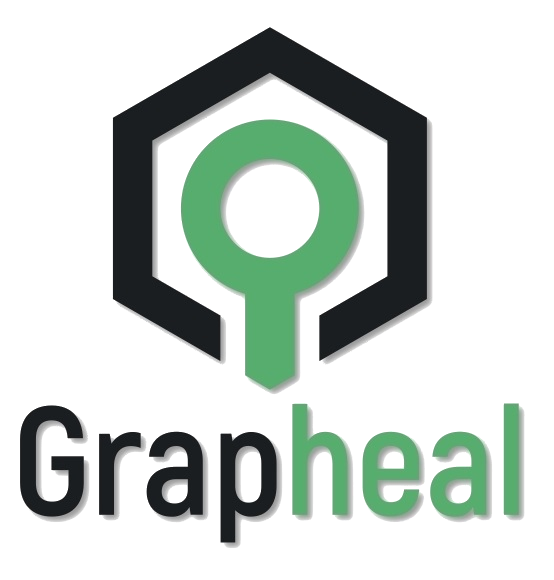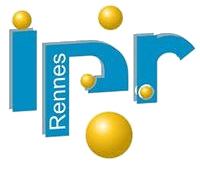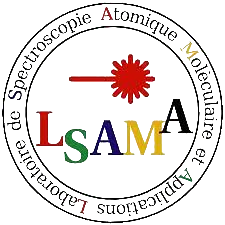In this page, I provide some highlights on my hardskill experience as a young physicist, knowing that besides my technical expertise, I am an extroverted and open-minded person - with a good communication skills - who is trying to leverage both my soft and hard skills to position himself as a future researcher.
Postdoctoral researcher

Ph.D. Thesis

My thesis page on Thése.fr website (PDF available via HAL) : https://theses.fr/2024UPASP106
My Ph.D. is a part of the theme of two-dimensional (2D) materials of atomic thickness which are nowadays considered with attention in view of future applications and more fundamental studies. In particular, this work is devoted to transition metal dichalcogenides (TMD). I got the opportunity to study different materials mainly the tungesten diselenide which took the biggest part of this thesis work. My Ph.D. was under the supervision of - the head of team - Dr. Abdelkarim Ouerghi who had a long experience with study of such structure. In addition, the team is composed of experts in material sciences with the main target was to study their optical, mechanical and electronic propeties. We are also growing 2D TMDs locally using CVD technique. By implementing a variety of microscopy and spectroscopy techniques such as Raman, photolumincence and photoemission, a study of the electronic, optical and structural properties of multiple 2D heterostructures has been performed in order to provide a better understanding of the properties of these emerging systems.
In order to investigte the optical properties of the 2D I got, I rely on Raman and Photoluminsence spectroscopy. Julien Chaste helped me with Raman spectroscopy and the transfer process of 2D materials. Indeed, 2D transfer techniques are essential to master to be able to build various heterostructures. During my Ph.D. I used both wet and dry methods to build 2D heterostructures. Atomic force microscopy is used to mesure the thickness of my structures. In our clean room, we use Brucker and ParkSystem machines. I performed also KPFM measurements on WSe2 and InTe samples.
Thanks to the help of Fabrice Oehler and Gilles Patriarche, I got TEM data on the heterostructures I have. With him, we have transfered CVD grown flakes on carbon covered copper grid and performed TEM measurement on WSe2. Along my thesis, Fabrice provide me with the different thickness WSe2 flakes on silicon oxide substrates. The IEMN team (Xavier Wallart and Niels Chapuis) provided me with the WSe2 on gallium phosphide MBE samples.
ARPES and XPS experiments were a such part of my thesis, All the expirement I made were in the different beamline of Synchrotron Soleil in France (Cassioppée, Antares and Tempo). For the analysis part, I used IgorPro and Python based softwares (check the Computer skills tab). Using ARPES and XPS, I have investigated the band structure of the different vdW heterostructures I am dealing with.
PhD is certainly one of the most beautiful experience that a person can live. I express again my gratitude to all the people helped me to live it in suitable conditions, my supervisor Abdelkarim, Fabrice, Julien, Geoffroy, Meryem, JC, Anis, Cléo and Gaia. I thank also all our collaborators from Synchrotron SOLEIL, François Bertran and Patrick Le févre from Cassioppée beamline, Pavel Dubin and José Avila from Antares beamline and Mathieu Silly from Tempo beamline. I thank Marco Pala, Adel M'foukh and Davide Romanin from COMICS team in C2N for all the provided DFT data and the long discussions. I thank also Xavier Wallart and Niels Chapuis from IEMN in Lille, Jean-Francois Dayen, Mohamed Soliman and Ankita Ram from IPCMS in Strasbourg and Iann Gerber from INSA in Toulouse.
Download clicking the button below the recommandation delivered by my supervisor (Head of MAT2D research team) (password required) :
Interships
M2 intership in Grapheal Start-up

Based on several patents, the company is exploiting the potential and promising properties of graphene for developing innovative gaphene-based medical devices that could improve healthcare.
During this internship, I was integrated to the research and development team, composed of experts in material sciences, biochemistry, wireless electronics, cloud and software engineering. A part of my work was with the growing of graphene on copper via CVD facility. Another part of the work was related to the fabrication of GFET sensors integrating an innovative hybrid structure.
With the engineer Riadh Othman, we grow high quality gaprhene on copper substrate. I used to perform wet transfer of graphene from the growth subsrtate (copper foil) to a polymer film of parylene or gold host substrate. The coppper is etched via different chemical solutions and many ways of transfer have been tested. I have succeeded to make a successful intercalation of a doping substance (viologen) between the graphene and parylene layers to increase the sensor sensitivity.
To ensure having a clean top graphene layer, we perform SEM measurements.
I worked also on the biochemistry part on the functionalization of the sensors which need the use of micro-chemistry facilities. To check on the state of the functionalization bodies, AFM mapping was a common tool I used.
This intership was a very important experience for me to familiarize with the cleanroom process and to be fully engaged with a team. Cetainly it was my first step to start a research carrer. I want to thank again Vincent Bouchiat and all the team members.
Download clicking the button below the recommandation delivered by : Vincent Bouchiat (Grapheal CEO) (password required) :
M1 intership in IPR

IPR develops fundamental and applied research at the highest international level thanks to the expertise of its technical and administrative staff. The work carried out is essentially fundamental research on emerging concepts in contemporary physics and in response to societal issues, with an increasingly important share of activities developed in the context of industrial partnerships.
My internship was conducted in the photoemission analysis laboratory under the supervision of Mrs. Ababou-Girard Soraya. During this experience, I was integrated in a small team with Gael Levanen (PhD student) and Nicolas Fournier Le Ray (M2-intership student) who are working on the development of electrochemical sensors for the detection of heavy metals for application to water treatment. In order to prepare the sensors, a functionalization step is necessary. At this level, X-ray photoelectron spectroscopy is necessary to ensure the fixation of ligand responsible for the detection and the chemical state of the surface after each functionalization step. In this context, I had the opportunity to participate in the preparation of samples and their transfer to the measurement chamber and in the acquisition and processing of data.
First, through this intership, I got familiarized with the XPS technique and I was allowed to deepen my knowledge on the properties of X-rays, its uses and the physical phenomena involved in such photoemission experiment.
Second, this experience gave me the opportunity to initiate myself to the techniques of surface functionalization by chemical substances and it revealed to me the means of optimization and the experimental difficulties to be met during the preparation of the samples.
Finally, I want to thank again Mrs. Ababou-Girard Soraya, Mr. Pascal Turban, Gael, Nico and all the members of IPR Institute for havin welcomed me. Without forgetting also all my classmates of my Master promotion 2019/2021 that I had the pleasure to meet and work with them.
Download clicking the buttons below the recommandations delivered by : Soraya Ababou-Girard and Pascal Turban (Master program director) (password required):
L3 intership in LSAMA

This intership was the first opportunity I get to be involved in a research environment. It was in the summer of 2019 after finishing my bachelor degree. During this experience, I worked on the analysis of radio frequencies triggered by lightning and the estimation of the distances to the sources using a very low frequency radio station. Indeed, we had a radio telescope type AWESOME (Atmospheric Weather Electromagnetic System for Observation Modeling and Education) provided by Stanford University in the framework of the International Space Weather Initiative (ISWI). This system is used for ELF-VLF data recording at our observation site (Tunis).
A work of analysis of the collected signals must be carried out in order to extract the cut-off frequencies and the modes and to be able to estimate the distance to the source thereafter. It was a good opportunity to start analyzing the data using tools for wave analysis (Sonic Visualiser) and programming (Matlab, Python)
Finally, I want to thank again Mr. Hassen Ghalila, Dr. Ahmed Ammar and all the members of LSAMA laboratory that I had the pleasure to meet. Without forgetting also all my classmates of my Bachelor promotion 2016/2019 and all my prefessor of the faculy of sciences of Tunis, especially Mrs. Sonia Haddad, Mrs. Amel Ben Romdhane, Mr. Morad Telmini, Mr. Adel Trabelsi, etc.
Download clicking the button below the recommandation delivered by : Sonia Haddad (L3 prefessor) (password required):
Other Professional Experiences
Instructor
During my PhD, I had teaching responsibilities for 84 hours in Polytech and IUT de Sceaux (Université Paris-Saclay).During my university studies, I use also to give part-time courses for students and high school students.
Download clicking the buttons below the teaching certificates (password required) :
Librarian
During my second year of master program in Rennes, I had a part time student job as an instructor in University library of Rennes. I was responsible for the shelf’s organization and ensuring the loan and return processes.This experience offered me an integration in a complete working environment. Find below a link toward my profile page on the Library website :
https://bibliotheques.univ-rennes1.fr/temoignages/aymen